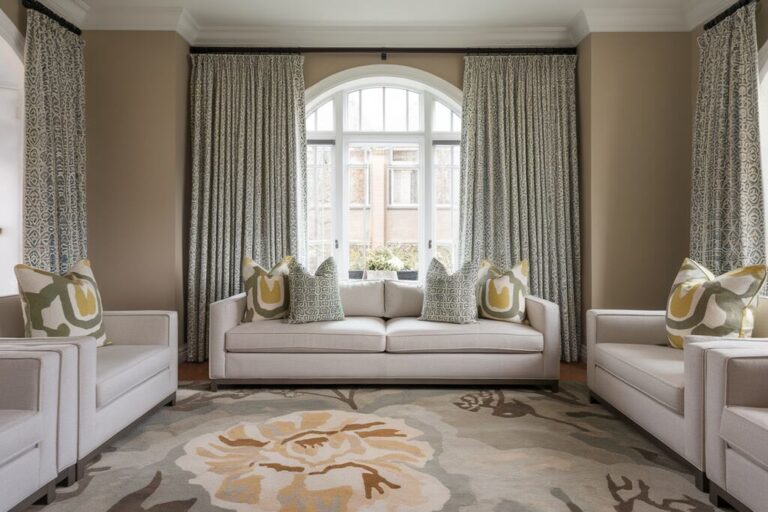In this blog, I will share how to use patterns in interior design like a pro—without making your space feel chaotic or overwhelming. Whether you love bold statement prints or prefer subtle textures, the right patterns can transform a room from ordinary to extraordinary.
It’s all about balance, scale, and smart placement to create a stylish, cohesive look. From geometric shapes to elegant florals, patterns add personality and movement to your space. But mixing and matching them can feel tricky.
Don’t worry—I’ll break down the best patterns for different styles, where to use them, and how to layer them seamlessly. Ready to master the art of patterns? Let’s dive in!
Why Patterns Matter in Interior Design
Patterns shape how a space looks and feels. They add depth, character, and structure, preventing a room from looking flat or uninspired. You can opt for walls, furniture, or flooring, the right pattern can make a space more dynamic and intentional.
They also help create balance and movement. Stripes can elongate a room, while geometric prints add order. Organic patterns, like florals, bring softness, while bold designs energize a space. The key is choosing patterns that align with your style and the room’s function.
Beyond aesthetics, patterns set the mood. A high-contrast design adds vibrancy, while subtle textures create a calming effect. When used thoughtfully, patterns transform a space into something both stylish and inviting.
The Most Popular Patterns & How to Use Them
Geometric Patterns

Geometric patterns bring structure and balance to modern and contemporary interiors. They work well on walls, rugs, furniture, and tiles, adding definition without overpowering the space. Their repetitive nature makes them easy to use in both bold and subtle ways.
Chevron and Herringbone create movement, making them ideal for floors, backsplashes, and textiles. Greek Key and Ogee add sophistication and are often used in borders, trims, and upholstery. For a bold, global-inspired touch, Moroccan Lattice works best on wallpapers, rugs, and decorative tiles.
You can use these patterns effectively, considering the scale. Larger designs make a statement, while smaller accents add depth without overwhelming the room.
Organic & Nature-Inspired Patterns
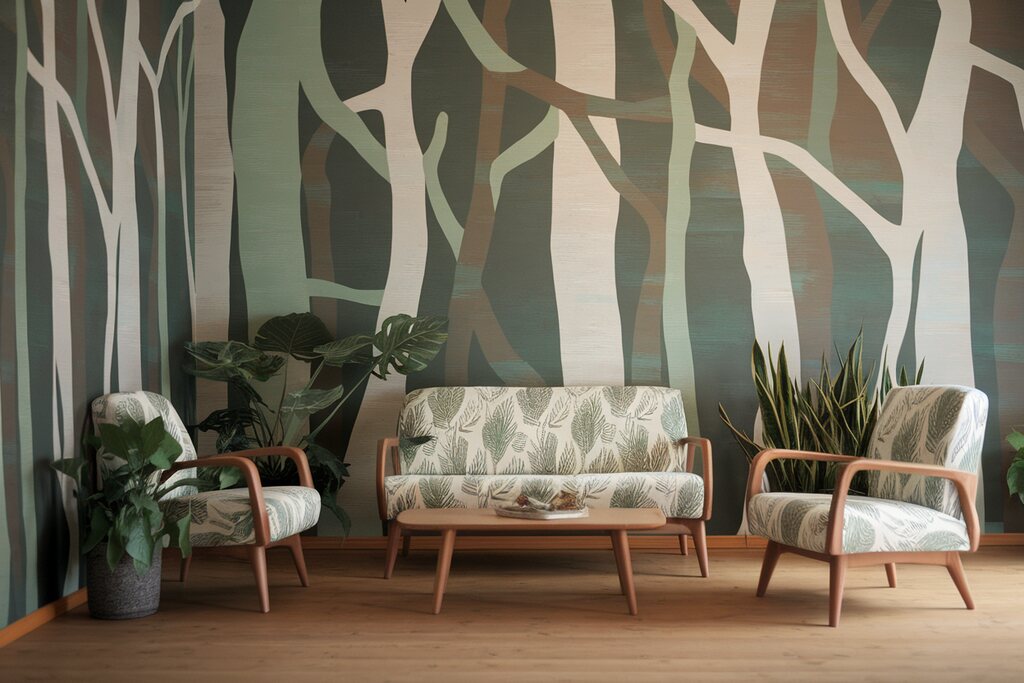
Organic patterns bring warmth and relaxation, making them ideal for bedrooms, living rooms, and cozy spaces. They create a natural flow in design, enhancing comfort and style with soft florals, intricate paisley, or bold animal prints.
Floral prints suit cottagecore, vintage, and romantic interiors, working well on wallpapers, bedding, and upholstery. Paisley adds a boho-chic touch in drapery, throw pillows, and accent walls, introducing artistic flair.
Animal prints, when used sparingly, create bold statements in rugs, cushions, or furniture without overwhelming the space. To maintain balance, you can mix organic patterns with neutral tones and natural textures, ensuring a cohesive and inviting look.
Classic Patterns
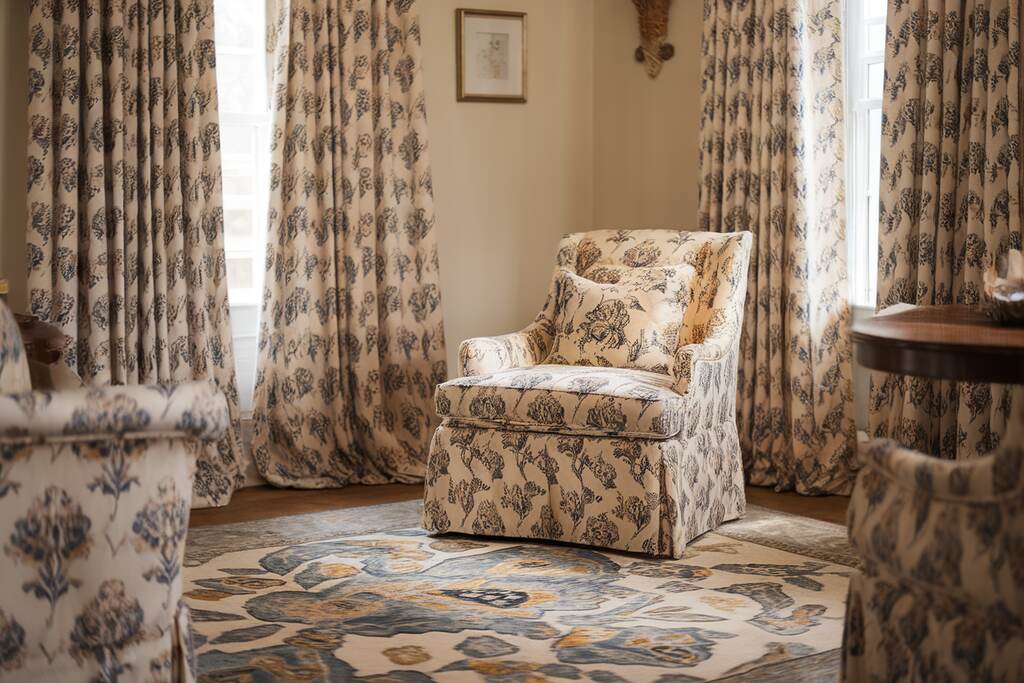
Classic patterns bring elegance and tradition to interior spaces, making them ideal for formal living rooms, dining areas, and vintage-inspired interiors. They add depth and sophistication, often used in wallpapers, upholstery, and decorative accents to create a refined look.
Damask features raised floral motifs, commonly found on curtains, wallpapers, and furniture fabrics, adding a touch of luxury. Toile showcases French country-inspired scenic prints, perfect for bedding, wallpaper, and textiles, bringing charm and visual storytelling to a space.
Harlequin and Checkered patterns introduce a bold, geometric effect, making them great for flooring, accent walls, and statement decor. You can pair these patterns with neutral colors and classic furniture for a timeless, sophisticated aesthetic.
Modern & Statement Patterns
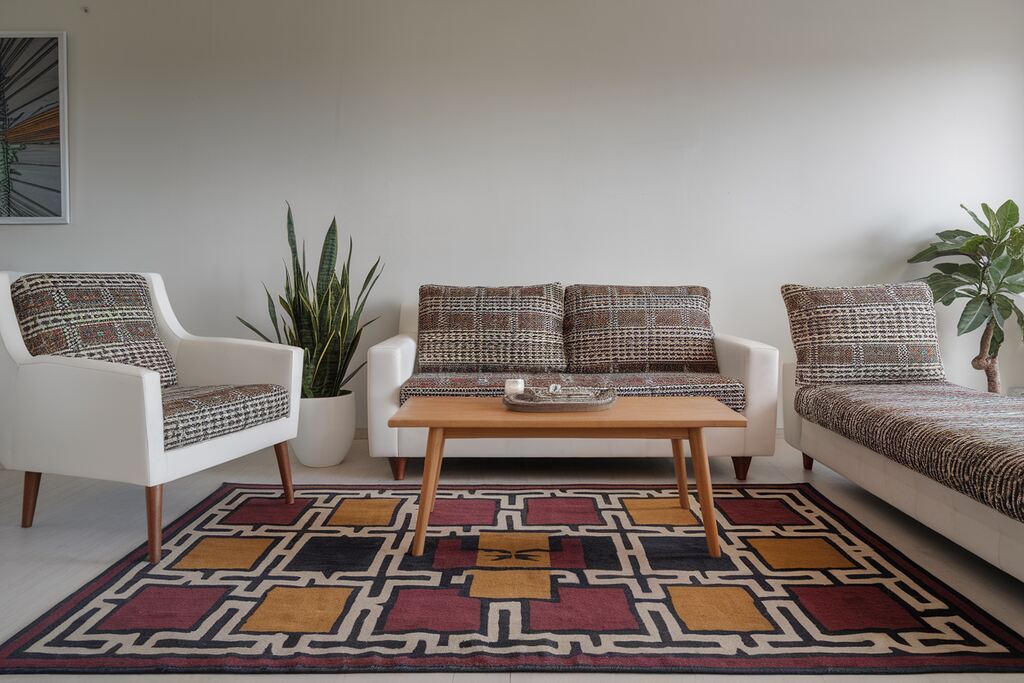
Modern and statement patterns add energy and personality to a space. They work best in small doses, making them ideal for accent walls, furniture, and décor pieces. These patterns bring movement, contrast, and a bold visual impact when used thoughtfully.
Polka dots create a playful, youthful feel, often seen in wallpapers, bedding, and decorative accessories. Flame stitch, with its retro zigzag design, adds dynamic movement and works well in upholstery, rugs, and textiles. Stripes are simple yet effective, helping to elongate a room when used on walls, rugs, and furniture.
To make a statement without overwhelming the space, you can balance these patterns with neutral tones and minimalist elements for a modern, polished look.
Where to Use Patterns Without Overdoing It
Walls & Wallpapers
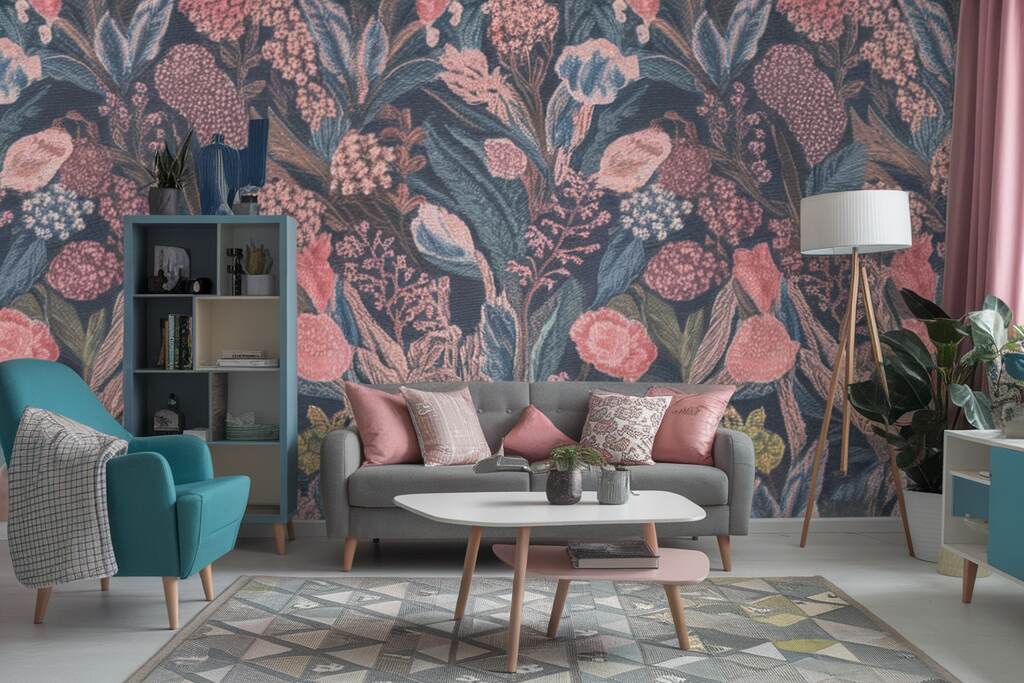
Patterns on walls can transform a space, but too much can feel overwhelming. An accent wall with bold wallpaper adds personality without dominating the room. You can opt for florals, geometric prints, or textured designs to create a focal point.
For a subtle approach, choose tone-on-tone patterns or textured wallpapers. If the walls are heavily patterned, keep the rest of the décor simple to maintain balance. Pair bold wallpaper with solid-colored furniture and minimal accessories for a polished look.
Floors & Rugs
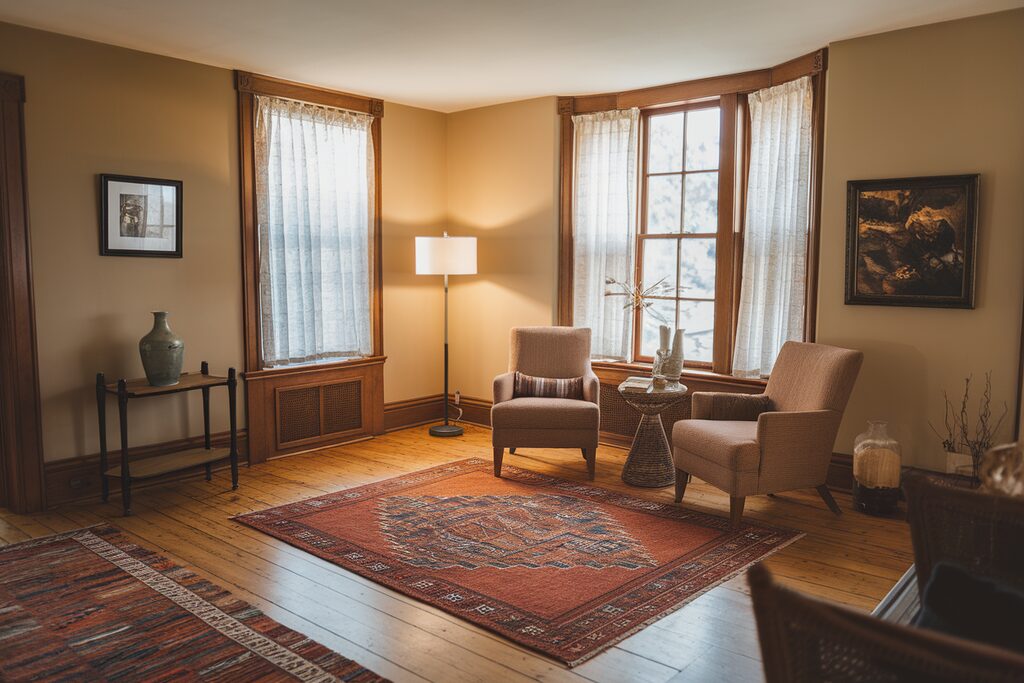
Flooring patterns add structure and movement. Chevron or herringbone wood floors give a sleek, modern touch, while Moroccan or geometric tiles bring a bold statement to kitchens and bathrooms. Keep surrounding elements neutral to let the flooring stand out.
A patterned area rug is an easy way to introduce prints without commitment. You can use a floral, abstract, or tribal rug to define a seating area while ensuring the rest of the décor complements its colors and design.
Furniture & Upholstery
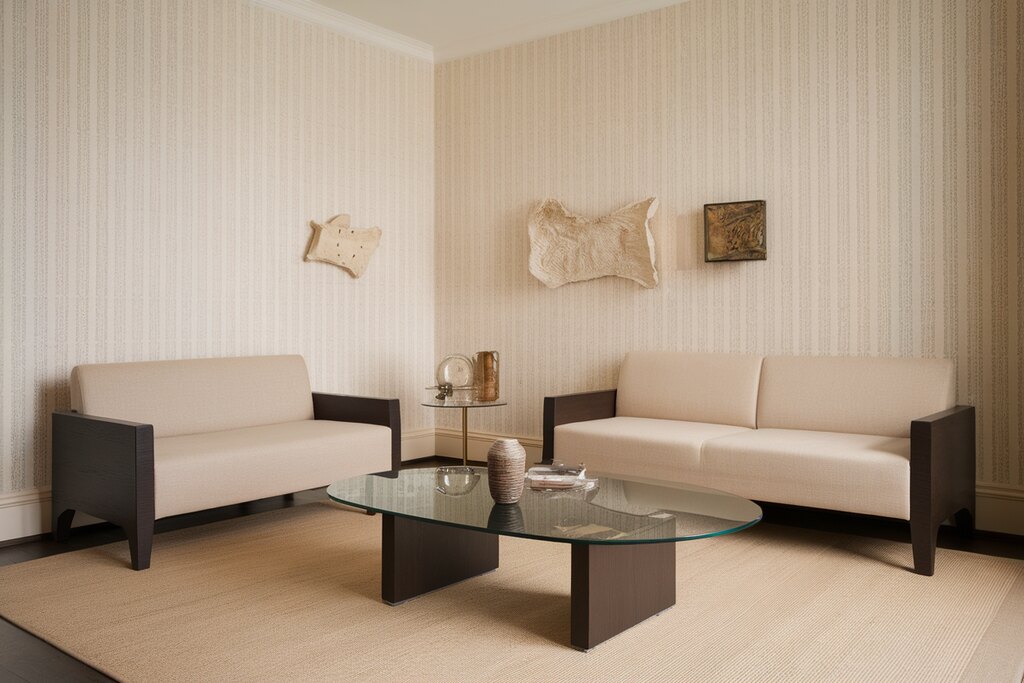
Large furniture with bold patterns can be overpowering. A patterned sofa or armchair works best in neutral spaces where it serves as the focal point. You can choose subtle patterns for long-term appeal, such as herringbone or small geometric prints.
For a safer approach, introduce patterns through cushions, throws, or upholstered ottomans. These smaller elements allow you to experiment with prints without overwhelming the space and can be swapped out easily.
Accessories & Small Decor
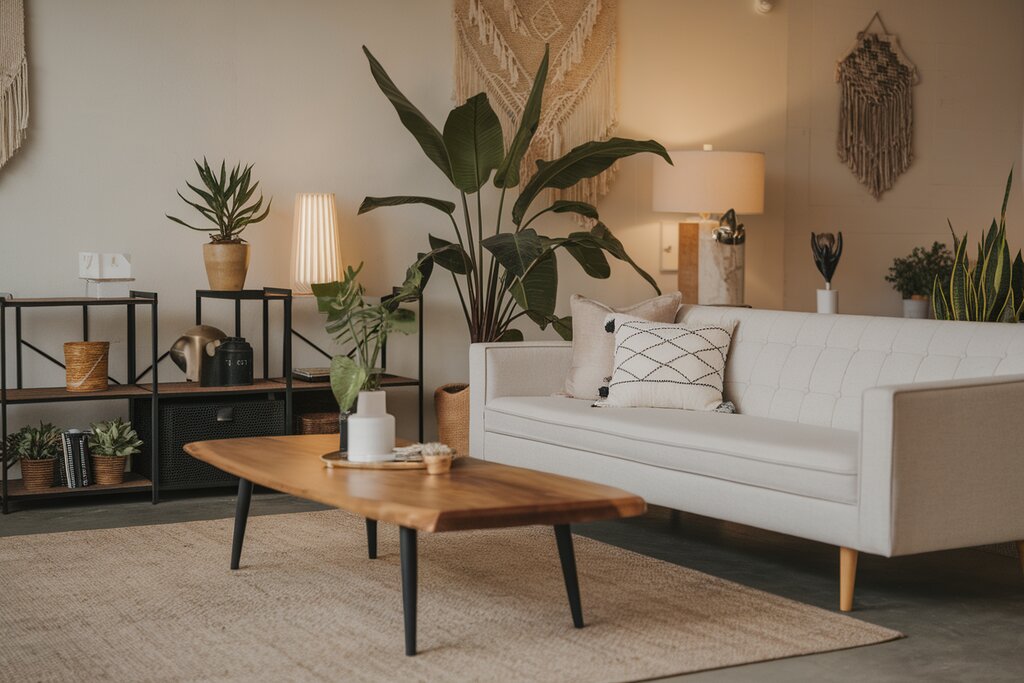
If you’re unsure about using patterns, start with accessories. Lampshades, artwork, vases, and decorative trays can subtly introduce prints. A striped or floral lampshade adds charm without dominating the room’s aesthetic.
You can pair a bold-patterned pillow with a textured solid throw for balance. Layering different prints in small accents allows you to adjust the design easily while keeping the space visually interesting.
How to Mix and Match Patterns Like a Designer
Scale It Right
Balancing the pattern scale is essential for a cohesive look. Large, bold prints make a statement, while smaller patterns add detail without competing for attention. Pairing the two creates harmony and prevents visual overload.
For example, if you have a large floral wallpaper, use small-scale geometric or striped patterns on upholstery or accessories. Mixing different scales allows each pattern to stand out while maintaining a well-balanced design.
Stick to a Color Palette
Using a consistent color palette ties different patterns together. The 60-30-10 rule helps maintain balance:
- 60% dominant color (walls, large furniture)
- 30% secondary color (curtains, rugs, accent chairs)
- 10% accent color (pillows, art, décor pieces)
Even with multiple patterns, sticking to a unified color scheme ensures a seamless and intentional design. Choose colors that complement each other rather than compete.
Combine Different Pattern Types
Mixing pattern types adds variety and movement. Geometric patterns like stripes or chevron bring structure, while organic patterns like florals or paisley soften the look. The contrast makes the space feel dynamic yet balanced.
You can pair a geometric rug with floral curtains or striped pillows with a botanical-print sofa. Keeping one pattern dominant and the other as an accent helps maintain harmony.
Add Texture for Depth
Pattern mixing isn’t just about prints; texture plays a key role. You can combine different materials adds depth and prevents the design from feeling flat. A patterned fabric on a sleek leather chair or a woven rug under a modern table enhances visual interest.
For a well-layered space, mix smooth and rough textures, like velvet cushions on a linen sofa or a patterned jute rug with a glossy coffee table. The contrast makes patterns feel more intentional and balanced.
Patterns & Interior Design Styles
Patterns shape the personality of a space and should align with the overall design style. Minimalist interiors use subtle stripes and geometric accents in neutral tones to maintain a clean, uncluttered look. Patterns here act as a quiet backdrop rather than a focal point.
Maximalist design embraces bold layering of florals, animal prints, and abstract patterns. Mixing large and small prints in vibrant colors creates a dynamic, energetic feel. Traditional interiors, on the other hand, favor damask, toile, and intricate woven designs, adding elegance and historical charm through wallpaper, textiles, and upholstery.
For a more artistic and relaxed look, you can go for boho and eclectic styles that combine global, tribal, and nature-inspired patterns. Layering paisley, Moroccan prints, and botanical designs in rugs, cushions, and decor creates a free-spirited, collected-over-time aesthetic.
Mistakes to Avoid
Using too many bold patterns can make a space feel chaotic. One statement pattern per room is usually enough. If you choose a bold wallpaper, keep other patterns subtle, like a small geometric print on pillows or a textured rug, to maintain balance.
Ignoring scale and balance can make patterns compete rather than complement. Large patterns work best on walls or furniture, while smaller patterns are great for accents like curtains or cushions. Stick to a harmonious color palette to prevent clashing; you can use complementary or neutral tones to unify the design.
Forgetting neutral spaces reduces the impact of patterns. Solid colors provide contrast, allowing patterns to stand out without overwhelming the room. Use plain walls, neutral furniture, or simple decor to let patterned elements shine.
Conclusion
Patterns have the power to transform any space, but using them wisely is key. Start small with pillows, rugs, or accent walls, then experiment to see what fits your style.
Focus on balance. Too many patterns create clutter, while a well-placed design adds character and depth. When done right, patterns turn a room into a visually stunning and cohesive space.
FAQs
How do I choose the right pattern for my space?
Start with a pattern that complements your existing décor. If your space is neutral, a bold pattern can add character. For colorful rooms, stick to subtle designs. Consider the scale—large patterns make a statement, while small ones add texture. Balance with solids for a cohesive look.
Can I mix different patterns in the same room?
Yes! The key is balance. Mix large and small-scale patterns, and pair structured (geometric) with organic (floral, paisley) designs. Stick to a cohesive color palette to avoid clashing. Use neutrals to tone down bold prints, and keep one pattern dominant to maintain harmony.
What are the best ways to add patterns without overwhelming a space?
Start small with accessories—patterned throw pillows, rugs, or curtains. Use wallpaper on one accent wall instead of the whole room. Keep large furniture pieces neutral and introduce patterns through smaller décor elements. If using multiple patterns, vary the scale and stick to a consistent color scheme.
Do patterns make a small room look bigger or smaller?
It depends on the pattern! Vertical stripes can make ceilings appear higher, while horizontal ones widen a space. Light-colored, subtle patterns add depth without overwhelming. Avoid large, bold patterns in small rooms, as they can feel cramped. Instead, go for smaller, repeating patterns to create an airy feel.
Which interior design styles work best with patterns?
Patterns can enhance any style! Minimalist interiors benefit from subtle geometric prints. Maximalist designs thrive on bold, layered patterns. Traditional styles embrace damask and toile, while boho and eclectic interiors mix florals, paisley, and tribal prints. The key is choosing patterns that align with your overall design aesthetic.

